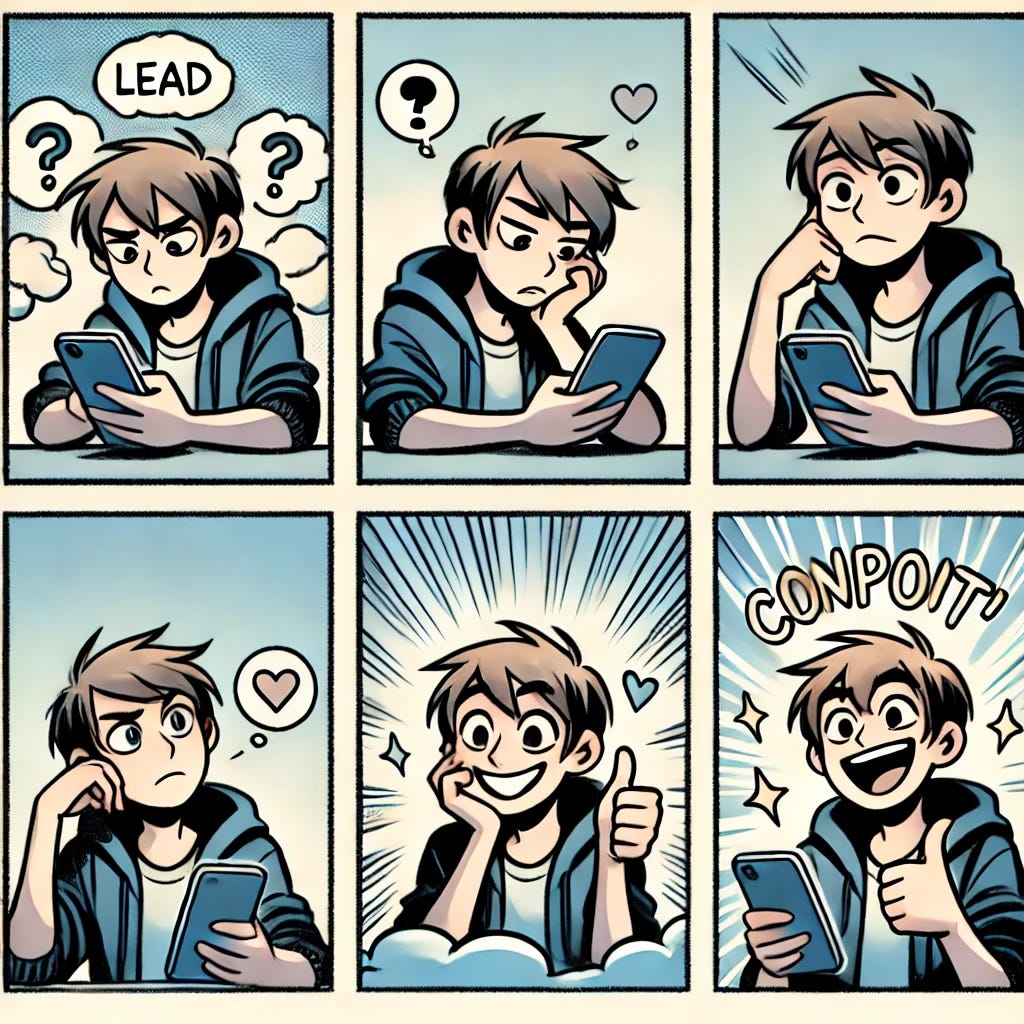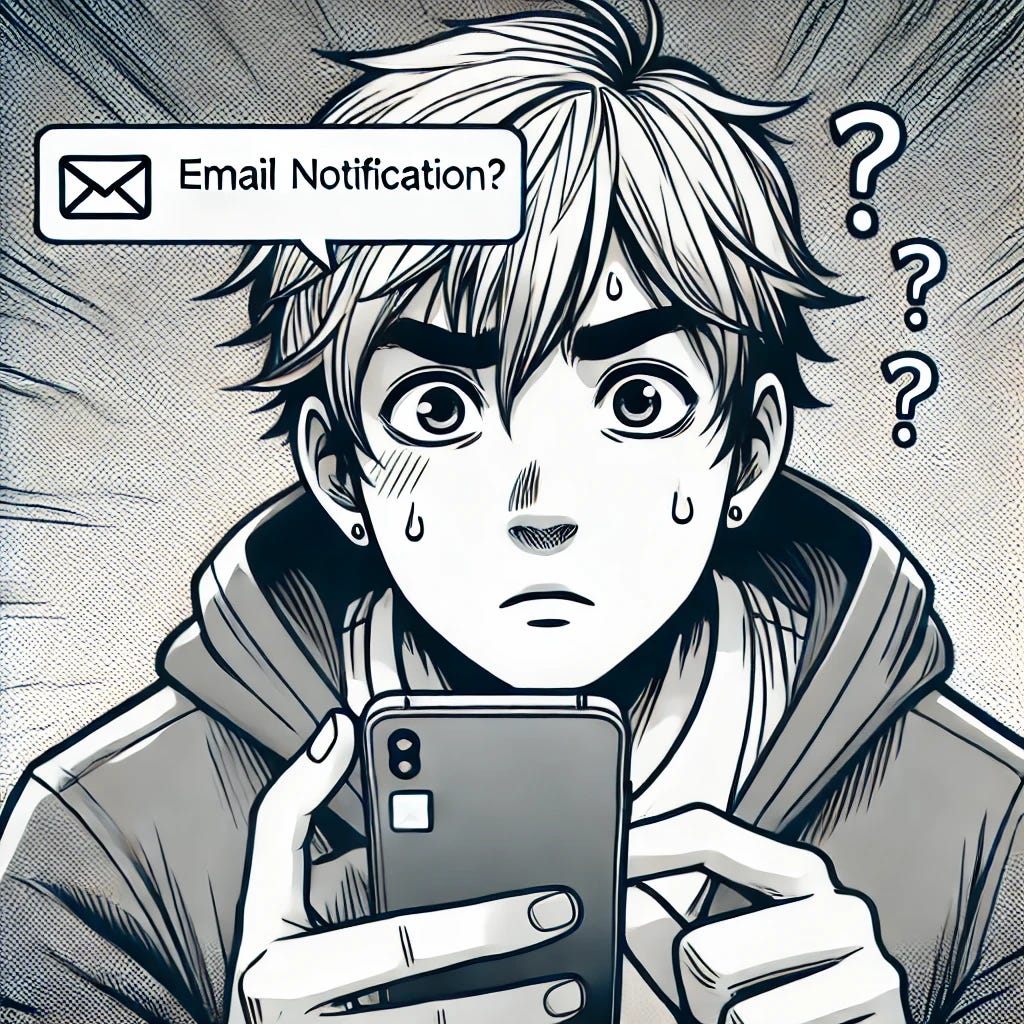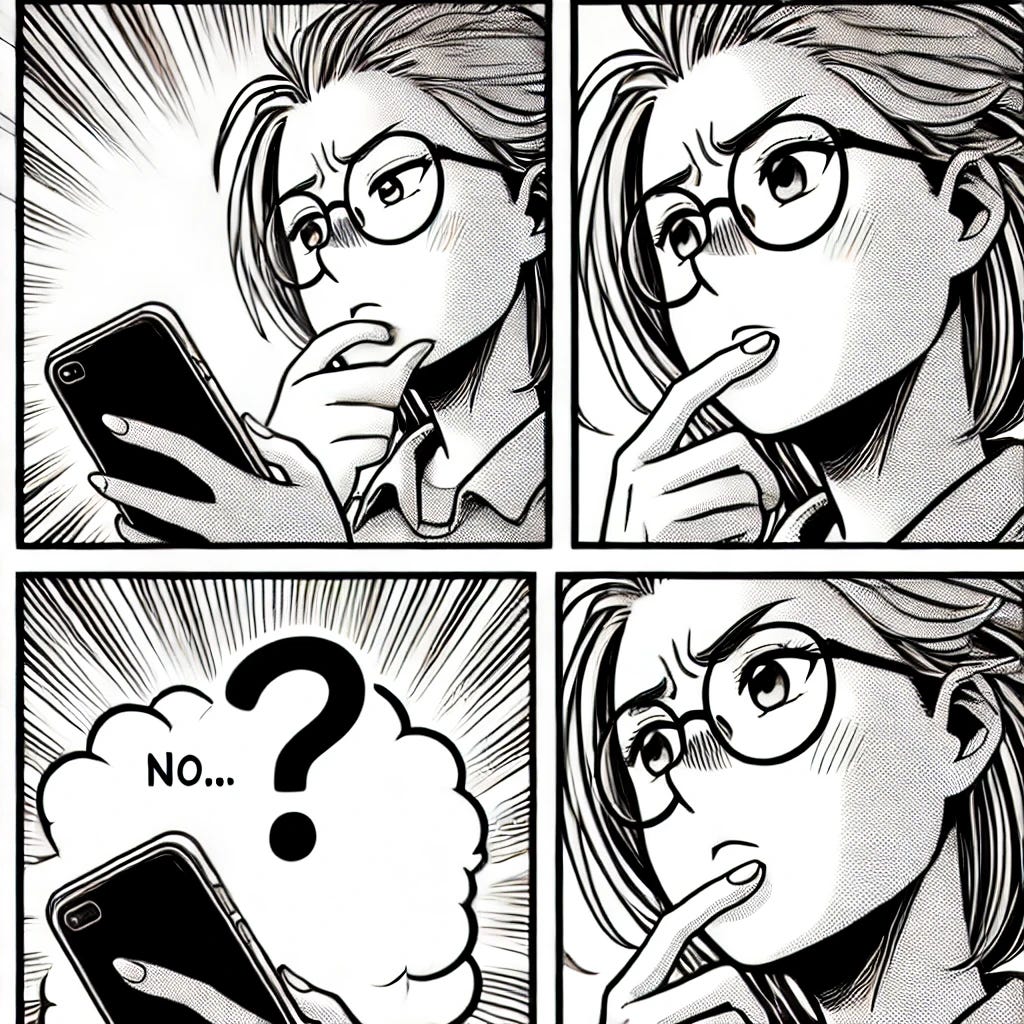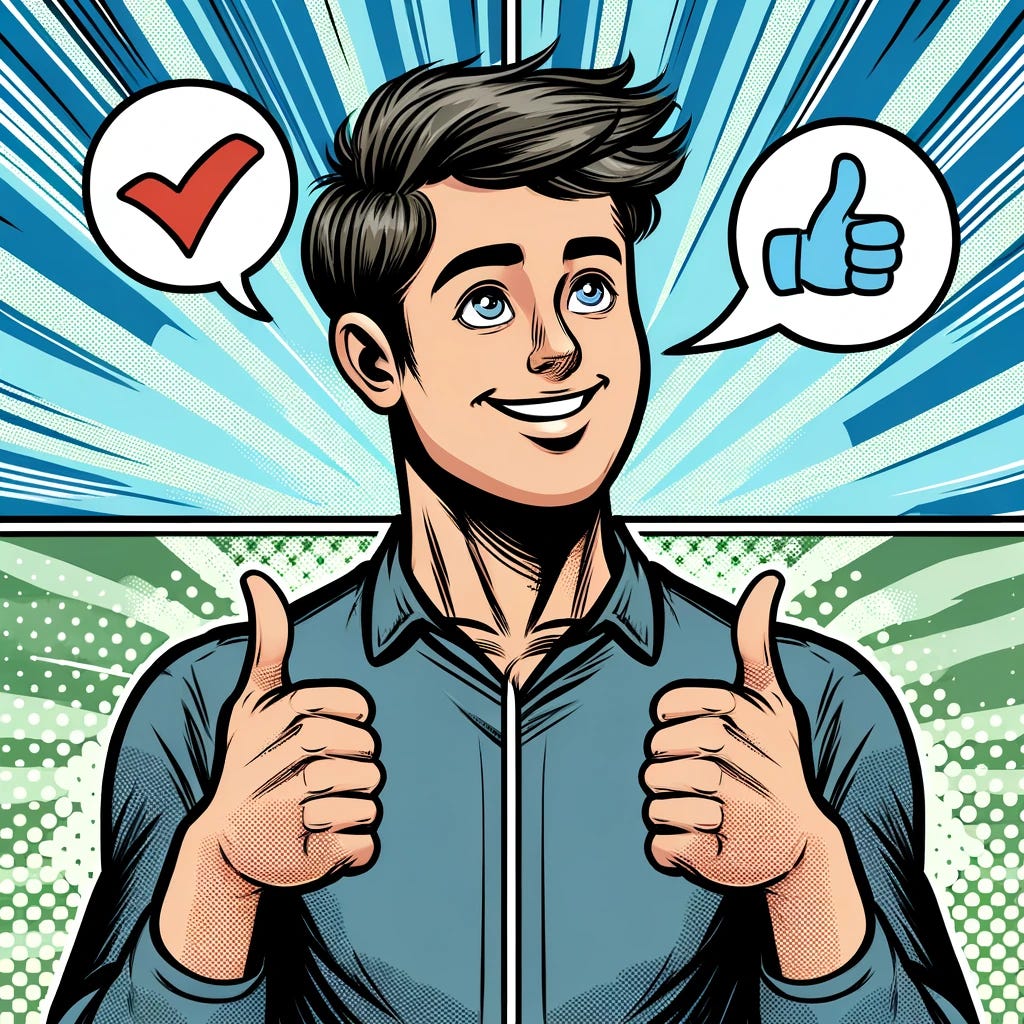The Art of Crafting Effective Email Sequences
Transform your leads into loyal customers
10X Conversions #06
Welcome back to the sixth edition of 10X Conversions!
Today, we’re diving into one of the most powerful tools in your marketing arsenal: email sequences.
We’ll explore how to build email sequences that don’t just inform but nurture your leads step by step—until they’re ready to say yes.
The Power of Email Sequences
Have you ever sent a one-off promotional email and gotten zero sales?
You probably sat there, refreshing your inbox, waiting for something—anything—to happen. But nothing did. One-off emails are like asking someone to marry you on the first date. It rarely works.
People don’t make decisions after one email. Not big ones, anyway.
They need trust. They need to know that what you’re offering isn’t just a quick sale but something that truly helps them. Especially if you’re a coach, consultant, or course creator—your audience is looking for more than a quick fix. They want a relationship.
That’s where email sequences come in. Instead of dumping everything into one email, you take it slow. You nurture them, one step at a time, until they’re ready to take the plunge.
In this post, I’ll show you how to use email sequences to gently guide your leads from “Who are you?” to “Take my money!”
Let’s get started.
Why One-Off Promotional Emails Don’t Work
One-off promotional emails? They’re like throwing a dart at a dartboard... in the dark. Maybe, just maybe, you’ll hit something. But let’s be honest—you’ll probably miss.
People need more than one touchpoint before they take action.
Think about it—when was the last time you made a big decision based on one email? It probably didn’t happen like that. You needed more information, more confidence, more proof.
One-off emails don’t give you that chance. They won’t let you build trust, educate, or show your audience why your offer is exactly what they need. It’s like skipping to the end of a movie and expecting to understand the plot. You’re missing all the important stuff in between.
And when that happens? People tune out. They delete your email. Or worse, they mark it as spam. Even if they open it, they’re not invested enough to take action.
Email sequences change the game.
You don’t have to cram everything into one email. You get to build a relationship over time. Every email moves them a little closer to where you want them to be—ready to buy. Instead of a single, desperate push, you’re taking them on a journey.
That’s why one-off emails miss the mark and why sequences are your secret weapon.
Understanding the Need for Email Sequences
Email sequences aren’t about sending a series of emails just for the sake of it. It’s like having a conversation.
Imagine walking up to someone and saying, “Hey, do you want to buy something?” It’s awkward, and no one wants to feel rushed like that.
Instead, think about the buyer’s journey. It’s like climbing a ladder. At the bottom, they’re just becoming aware of their problem. At the top, they’re ready to take action. And your emails are the rungs on that ladder.
At the awareness stage, your lead is just starting to realize they have a problem. They’re not ready to buy; they’re still figuring things out. Your job here is to help them understand the problem. You’re the guide, not the salesperson.
As they climb higher to the consideration stage, they start comparing options. This is where you build trust. Show them examples, testimonials, and real stories from real people. Let them know you’ve got the solution they need.
By the time they reach the decision stage, they’re ready. They just need a little nudge. This is where your call to action comes in—a gentle push to remind them why now is the perfect time to take the next step.
The key to it all? Consistency.
Each email builds on the one before it. And as you keep showing up, your leads go from lukewarm to ready to say yes.
Types of Sequences for Nurturing and Closing
Not all email sequences are the same. Different sequences serve different purposes, depending on where your lead is in their journey.
Here’s a breakdown of the key types you can use to nurture and convert your leads:
Nurture Sequences
Nurture sequences are about building relationships over time. You’re not hammering them with offers. Instead, you’re giving them insights, tips, and stories that show you understand their struggles—and that you have the solutions.
Take this example: A coach sends a 5-part nurture sequence. Every week, the lead gets a new tip on managing stress—simple, actionable advice they can try immediately. By the end of the sequence, the coach is seen as a helpful, trustworthy resource. And now? The lead is far more open to hearing about services or products.
Engagement Sequences
Engagement sequences are all about getting your audience to take a small action. Maybe you’re asking them to fill out a survey, reply to a question, or join your community. It’s about keeping them involved and engaged.
After a webinar, for instance, you could send a 3-part engagement sequence. You ask for feedback, invite them to a private Facebook group, and share extra resources to keep the conversation going.
Sales Sequences
Sales sequences are designed to move leads toward a purchase. You’ve already built trust—now it’s time to present your offer. You’re not just pushing the sale. You’re showing them the value of your offer, addressing objections, and creating a sense of urgency.
Let’s say you’re a course creator launching a new program. Your sales sequence might include testimonials from past students, a limited-time discount, and a reminder that enrollment closes soon. It’s all about making it easy for them to say yes.
Re-engagement Sequences
Sometimes, leads go cold. Maybe they’ve stopped opening your emails, or they lost interest along the way. That’s where re-engagement sequences come in. These emails are designed to rekindle interest and remind them why they signed up in the first place.
You might send a fresh resource or highlight a recent success story—anything to grab their attention and get them back in the loop. It’s like offering them a second chance to reconnect.
Each of these sequences serves a specific purpose. But together, they form a powerful system that nurtures your leads and converts them into customers.
You’re not just throwing emails into the void. You’re guiding them through a well-thought-out journey.
Designing Effective Nurture-to-Close Sequences
Designing an effective email sequence isn’t about sending out random emails. You need a plan. Every email should have a clear purpose and fit into the bigger picture.
Here’s how you can design a sequence that smoothly moves your leads from interest to action.
Mapping Sequence Goals to Sales Funnel Stages
Your email sequence should map directly to the stages of the sales funnel.
Focus on education in the awareness stage. Help them understand their problem. In the consideration stage, build trust with case studies and testimonials. And in the decision stage, give them a nudge to take action.
For instance, a consultant might send a sequence that starts with emails highlighting common business growth challenges (awareness), followed by success stories of how they helped businesses grow (consideration), and finally, a special offer or opportunity to book a call (decision).
Crafting a Coherent Narrative Across Multiple Emails
Your emails should tell a story. Each should build on the last, taking your leads on a journey. Think of it like writing a series of chapters in a book—each chapter adds to the overall narrative.
If you’re a coach helping clients manage time, your first email might introduce the problem. The next could share a personal story about how you overcame it. The following emails might offer tips, success stories, and an invitation to work with you. By the end, they’re ready to solve the problem—with your help.
Balancing Value-Driven Content with Sales Messages
It’s a fine line. You don’t want to give away too much for free, but you also don’t want to push the sale too hard. Each email should offer value—advice, a resource, or a success story—while gently reminding them that you have the solution they need.
You could offer a helpful tip in the body of your email and then close with a line that says, “If you’d like more personalized help with this, click here to learn more about my coaching program.”
It’s subtle but effective.
Designing a nurture-to-close sequence is about more than sending out a few emails. It’s about guiding your leads through a thoughtful process—step by step—until they’re ready to take action.
Map out your goals, craft a coherent story, and balance value with sales messages. That’s how you turn leads into customers.
Common Mistakes When Creating Email Sequences (And How to Avoid Them)
Creating email sequences isn’t rocket science, but it’s easy to trip up. The good news? You don’t have to learn the hard way.
Here are the five most common mistakes people make—and how you can steer clear of them.
Mistake #1: Skipping the Strategy
It’s tempting to jump straight into writing, especially when you’re excited. But if you don’t have a plan, you’ll send emails that feel all over the place. Imagine watching a movie with the scenes out of order—confusing, right?
How to Avoid It: Start with a clear roadmap. Before you type a single word, map out your sequence. Know what each email is meant to do. When you have a plan, your emails will flow like a well-told story, not a disjointed mess.
Mistake #2: Giving Too Much Too Soon
You want to wow your audience. So, you pack your first email with everything—tips, advice, your best stuff. But instead of wowing them, you overwhelm them. You give them so much in one go that they don’t feel the need to stick around for the next email.
How to Avoid It: Think of your sequence as a Netflix series. You don’t reveal the twist in the first episode, right? Slowly peel back the layers. Keep them curious, make them look forward to what’s coming next, and spread out the good stuff.
Mistake #3: Focusing Only on Sales
It’s easy to get carried away by the goal—selling. So, every email becomes a pitch. But when every email screams “buy now!” people start tuning out. No one wants to feel like they’re in a never-ending infomercial.
How to Avoid It: Make your emails a two-way street. Give value before you ask for anything in return. Offer a tip, share a story, or give a small win. When people see that you’re not just in it for the sale, they’re more likely to stick around—and eventually buy.
Mistake #4: Not Segmenting Your Audience
Sending the same email to everyone feels efficient, right? But it’s like trying to sell a blanket to someone living in the desert—it just doesn’t fit. Not every person on your list is at the same point in the journey, and not everyone has the same needs.
How to Avoid It: Divide your audience into groups based on behavior, interests, or where they are in your funnel. Now, when you send an email, it speaks directly to them. It’s like having a conversation tailored to each person instead of shouting into a crowd.
Mistake #5: Forgetting to Follow Up
You sent the sequence. Done, right? Not so fast. A lot of leads need a little more time. They’re on the edge of buying but aren’t quite there yet. And if you stop following up, you might just lose them.
How to Avoid It: Don’t let the conversation end with your sequence. Have a follow-up plan. Maybe it’s a re-engagement email or a simple check-in to see how they’re doing. Keep the conversation going. You’ll be surprised how many leads return when the timing’s right.
Conclusion
Email sequences are more than just a bunch of emails.
They’re a way to build real connections with your leads. You guide them through the buyer’s journey, from the first moment of awareness to the final decision. It’s about trust, value, and showing up consistently.
You can nurture your leads and convert them into loyal customers using email sequences. Whether you’re building relationships, driving engagement, making sales, or re-engaging cold leads, sequences give you a roadmap to success.
Now that you’ve got the blueprint, it’s time to implement it.
Start by planning one sequence—whether it’s a nurture sequence or a sales sequence. Map it out, send it out, and take your leads on a journey that ends with them choosing you.
But if crafting these sequences feels a bit overwhelming, don’t worry—you don’t have to do it alone. I help coaches, consultants, and course creators like you build powerful email sequences that nurture leads and drive conversions. So, if you’re ready to take your email marketing to the next level, feel free to reach out. Let’s create something that speaks directly to your audience and gets results.
Three Ways You Can Help This Newsletter Thrive
Share Your Ideas: Do you have a topic you'd love to see in the next edition? I’m always looking for fresh ideas. Comment your suggestions, and let’s make this newsletter even more valuable together.
Spread the Word: Do you know someone who would appreciate this content? Share it with your friends. Your help is essential to growing this newsletter.
Engage: If you enjoyed this edition, don’t forget to like, comment, and restack it! Your engagement helps more people discover the newsletter and keeps the momentum going.







